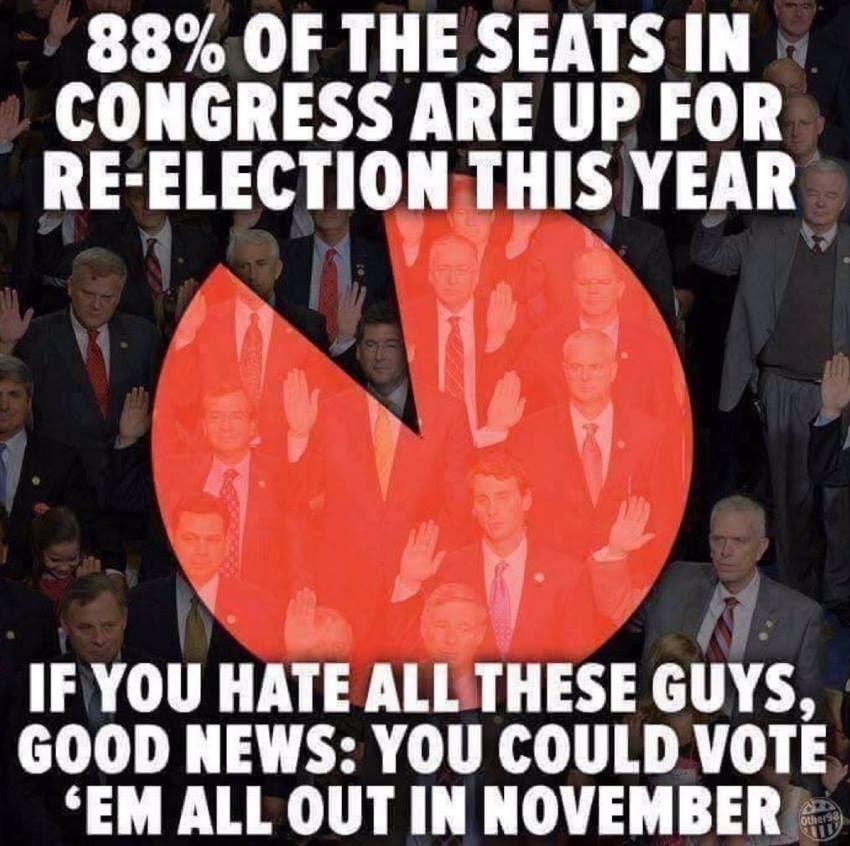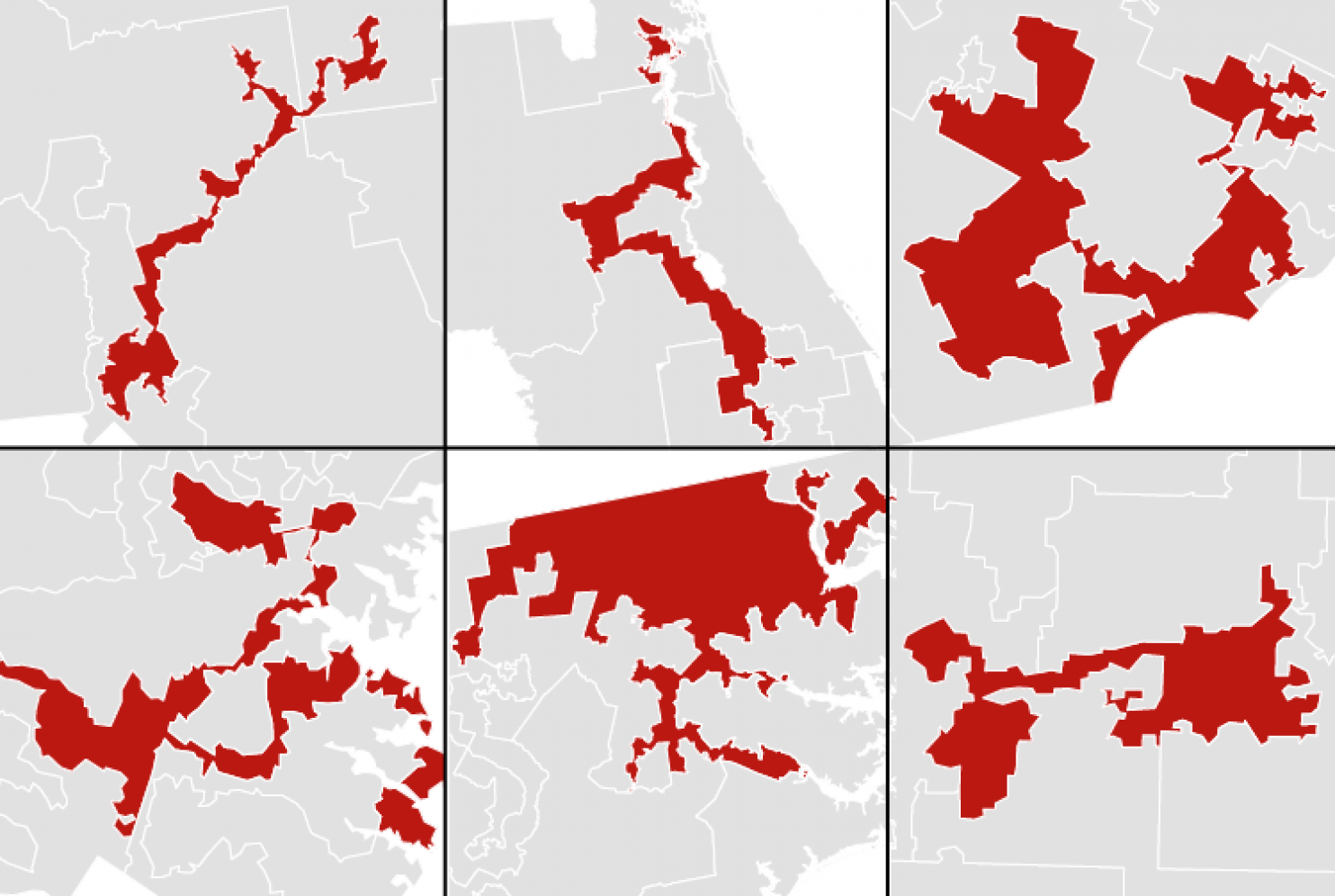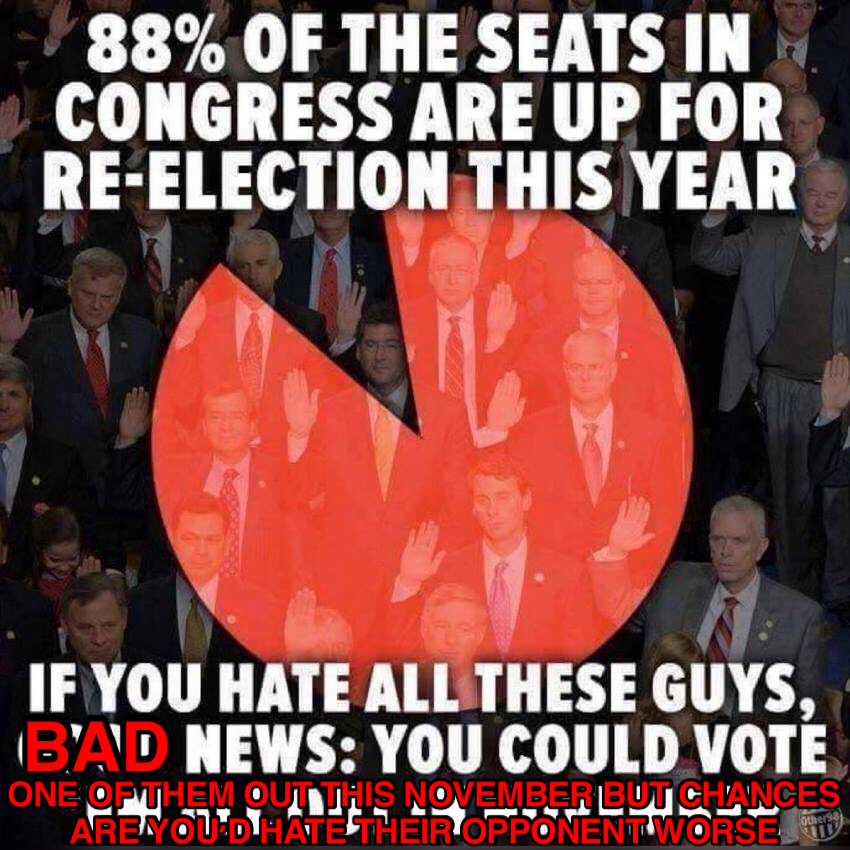
Photo credit: Franklin Heijnen. https://www.flickr.com/photos/franklinheijnen/
Welcome to Modern America, where the meme has become a driving form of social commentary. Using an image and just a few words, one can easily convey a LOT of information that’s incredibly easy to share. Too often though, people just take these memes at face value. Especially ones that use numbers.
It’s my goal to dissect these kind of memes mathematically, in order to reveal a more accurate picture. Stay with me.

It’s true that all 435 seats in the House of Representatives and basically one-third of the seats in the Senate (34 of the 100) are up for election this year. Basic math tells us that 469 contended seats out of an available 535 is, indeed, 88 percent. But let’s go deeper.
Each individual voter in America is only able to vote for one Representative and up to one Senator. So, if you’re lucky, you get a say in two of the entire 535 member Legislative Branch. But remember, only 88 percent are on the ballot this year. That means each registered voter can cast a ballot for a piddling 0.4 percent of those seats up for election, and has no say in the other 87.6 percent America could vote out. (That is, unless you happen to live in the District of Columbia, where you have no say in a voting Member of Congress, regardless of, well, anything.)
And despite this meme’s mutinous rallying cry, only 59 of the 469 seats in contention this year (48 in the House and 11 in the Senate) are even the slightest bit competitive.
How do we know this before any votes have been cast?
Well, for starters, there’s a little thing called gerrymandering. Both political parties have spent a great deal of their time in power drawing and redrawing the borders of voting districts to ensure that elections are fairly predictable. It’s dirty business, and the reason why some districts look like Jackson Pollock paintings.

Image Source: www.washingtonpost.com/news/wonk/wp/2014/05/15/americas-most-gerrymandered-congressional-districts/
But regardless of whether they were drawn in or moved in, most Americans live and vote in districts where they approve of their own representatives, even if they disapprove of Congress as a whole. That is, after all, the nature of a representative democracy: In a country as diverse as the United States, there will be a whole lot of people with whom you disagree, and those people are likely electing people with whom you also disagree.
Based on this elective predictability, and given the populations of the 59 districts potentially in play, it turns out only 11 percent and 28 percent of the country’s population (House and Senate seats, respectively) have even the slightest chance to vote ANYBODY out.
So, by now, it’s pretty apparent we can’t just “vote ‘em all out.” This leads to a different set of questions:
Where in America does a single vote carry the most impact? Who gets the biggest voice to affect change?
The best case for that distinction probably goes to a resident of Nevada’s Third Congressional District, located in the southernmost tip of Nevada, just below Las Vegas. They’ve got an open seat in a district that tilts neither left nor right, their Senate race is also an open seat toss-up, and the Presidential race is up in the air, as well. To boot, in a state like Nevada, each individual vote represents a higher percent of the total, thanks to the sparse population.
So, yes, for the registered voters of Nevada’s Third, they can vote ‘em all out. But otherwise, we’ve got some meme rewriting to do.
To be more accurate, here’s what it should say:

Doesn’t quite have the same ring.
Sources:
http://www.centerforpolitics.org/crystalball/
https://en.wikipedia.org/wiki/List_of_U.S._states_and_territories_by_population
http://fivethirtyeight.com/datalab/disliking-congress-as-a-whole-and-as-individuals/
https://en.wikipedia.org/wiki/Nevada%27s_3rd_congressional_district



